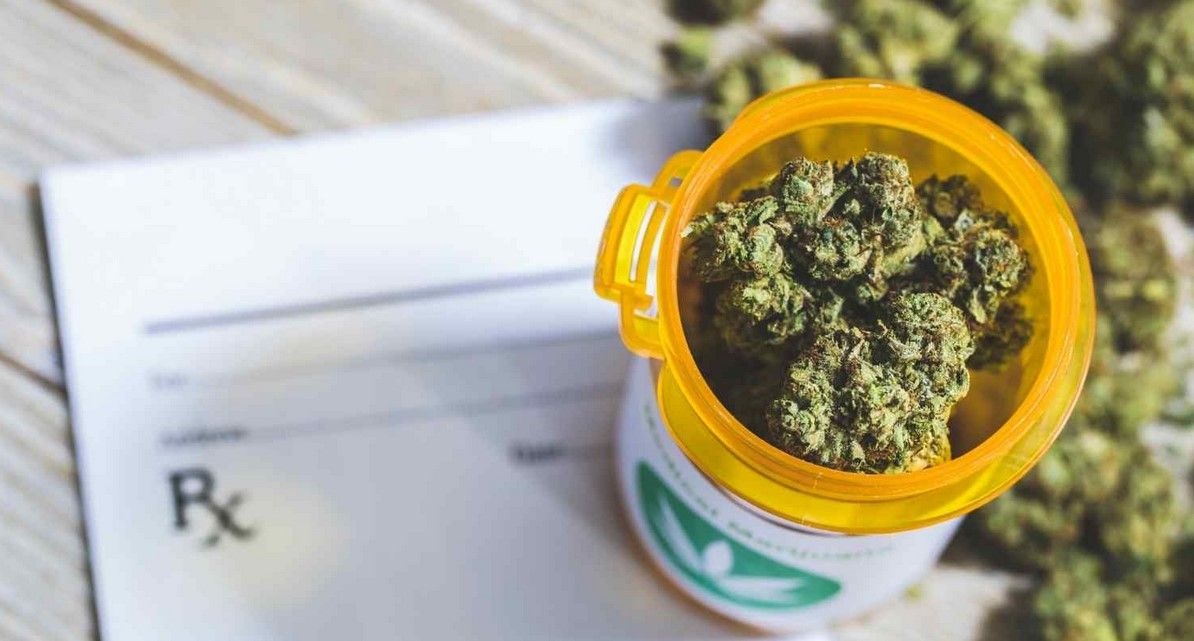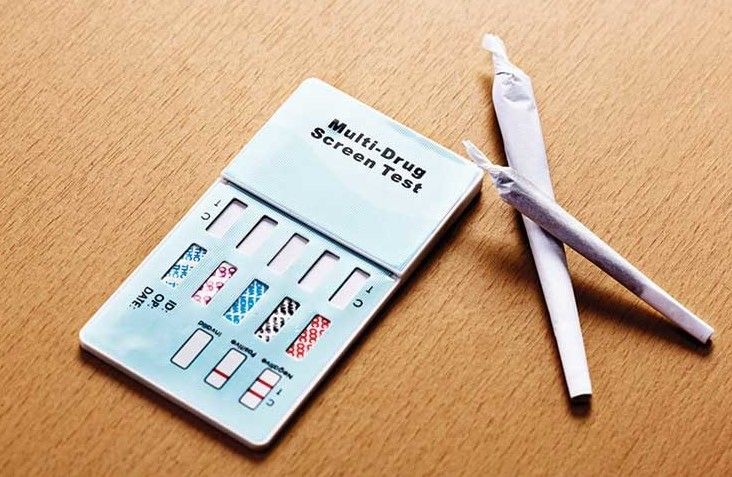The Centers for Disease Control and Prevention (CDC) has reported that 18 percent of people in the United States, totaling around 48 million individuals, use cannabis at least once a year. Additionally, many states now have medical marijuana programs in place as well as allowing legal adult-use of cannabis.
In concept, this is fantastic since people can practice their autonomy when away from work. This has been especially beneficial for those who need to use marijuana as a medical treatment.
Yet, the reality isn’t quite as encouraging. Despite shifts in attitude towards marijuana usage, many employers still disapprove of it – even if it is done outside of work hours. This is why they may require drug tests before or during your employment with them.
Many workplaces use urine drug tests as they are affordable and simple to administer. Yet, many people fail to recognize that panel tests detect various amounts of drugs. This article examines 5-panel, 10-panel, and 15-panel drug exams as well as what you can anticipate in a workplace screening procedure. Be sure that your business is up to date with the most effective solutions for detecting possible illegal activities!
State Laws Don’t Always Protect Marijuana Users
It’s vital to remember that though marijuana is illegal under federal law in the United States, individual states are free to make their own rules regarding cannabis use and its impact on work environments. While some regions safeguard users of marijuana more than others, there still exist areas where it remains tricky or even impossible for individuals to utilize the drug legally.
In the state of Maine, companies are no longer allowed to screen for cannabis as part of their testing procedures. This means employees can consume marijuana in their free time without worrying about repercussions at work. Testing positive for marijuana is not seen as evidence that somebody is under the influence while on duty. Therefore, workers have more freedom than before when it comes to recreational drug consumption outside of work hours.
However, certain states like California enforce stringent regulations that are not supportive of employees. Even though cannabis is recreationally legal in the state, pre-employment drug tests may lead to an applicant being rejected if they test positive for THC metabolites.
Rules and regulations concerning cannabis use differ greatly from one state to the next, so employees should confirm whether they are protected against termination if a drug test comes back positive.
Despite recreational marijuana being lawful in California, employers are still allowed to conduct drug tests on anyone they want. This must be done through a “fair and consistent manner,” yet this broad phrasing offers companies plenty of room for interpretation.
If you’re an MMJ user, it’s vital to review your state laws on cannabis use and whether they protect employees from being dismissed due to a positive drug test. Although some citizens have won their case after employment termination for marijuana use, not all states allow this type of protection. Thus, taking the time to understand what is permissible in your jurisdiction is critical when considering legal recourse if needed.
To get a better understanding of drug screening, continue reading to learn more about the three primary types. Notably, most of these facts pertain specifically to urine testing.
What Is a 5-Panel Drug Test?
Drug tests are classified by the number of drugs they detect, with a 5-panel drug test being the most commonly used in workplaces. This is due to its affordability and simplicity as well as its ability to identify the main drugs employers are concerned about. In other words, this type of drug testing serves both practicality and efficiency for organizations at an economical cost.
5-Panel Drug Test: What Drugs Does It Screen?
Here are the five drugs tested for in a 5-panel drug test:
- Marijuana: Looking for evidence of marijuana use? An urinalysis is your answer, as it detects the number of THC metabolites (specifically THC-COOH) in a person’s system. This metabolite originates from breaking down the main psychoactive component found in cannabis – Tetrahydrocannabinol (THC).
- Cocaine: According to the Controlled Substance Act, cocaine is currently classified as a Schedule II drug.
- Amphetamines: Amphetamines are commonly found in the form of tablets that need to be crushed and snorted through the nose. These drugs may also take a legal form, such as Ritalin or Adderall, but can additionally manifest illegally, like methamphetamines or crystal meth.
- Opiates: Opium, which originates from the poppy plant, is used to create opiates such as heroin. Additionally, a 5-panel drug screening evaluates for legal substances including codeine and morphine.
- Phencyclidine: Often referred to in popular culture with its acronym, PCP is a manufactured drug accessible as either powder or liquid.
Employers commonly rely on 5-panel drug tests to detect usage of the most popular drugs. These assessments are affordable, convenient and highly efficient in delivering results.
What Is a 10-Panel Drug Test?
A 10-panel drug test is not a requirement for most employers, though certain industries must use it to ensure the safety of individuals. This type of testing screens for all the same drugs as its 5-panel counterpart, along with five additional ones. Law enforcement officers and personnel from federal or local governments as well as medical professionals should expect a 10-panel exam during their hiring process.
If you fit one of the above criteria, your employer may require you to take a drug test upon hiring or during employment. This requirement is likely mandated by law in order to ensure workplace safety and productivity.
Not only are pre-employment and random screenings taken into account, but if an employer observes signs of drug use in the workplace they reserve the right to request a 10-panel test from their employees. Also, should any employee be absent due to substance abuse treatment, they must then pass a drug test prior to returning to work duties.
10-Panel Drug Test: What Drugs Does It Screen?
Apart from the five drugs in the 5-panel test, the 10-panel version looks for the following:
- Barbiturates
- Propoxyphene
- Methaqualone (also called Quaaludes)
- Benzodiazepines (including Xanax, Prozac, Lorazepam, Valium)
- Methadone
The 10-panel drug test is designed to detect the most regularly abused drugs in America, including the ones mentioned above.
What Is a 15-Panel Drug Test?
If a 10-panel drug test isn’t enough, the 15-panel version is here to help. By testing for an additional five substances, this extremely rare form of examination allows organizations to assess potential employees with extra scrutiny – usually only applicable in highly specialized roles.
15-Panel Drug Test: What Drugs Does It Screen?
The additional substances that a 15-panel test can detect are:
- Buprenorphine
- Oxycodone
- MDMA
- Meperidine
- Tramadol
What Happens During a Drug Test?
To avoid any surprises, it is important to be aware of the regulations and laws in your state when it comes to drug testing. Even though a urinalysis is typically a quick process, you may get notice beforehand or have completely random screenings without warning – so stay informed!
Testing in the warmth and comfort of your office, testing center or health clinic can be done with ease! An experienced technician will guide you through each step and provide comprehensive instructions regarding how to go about it so that all that is required from you is a cup for collecting urine samples.
Many individuals feel that it’s wrong to be examined for cannabis use as they’re often not committing any unlawful acts in their states. That said, don’t assume you can easily outwit a technician with one of the many available methods of cheating on drug tests!
To combat cheating, there are several steps that you can take, including:
- Ensuring that you don’t bring any fraudulent samples into the stall by conducting an in-depth search.
- Carefully assessing the area beforehand can help guarantee that your sample is accurate and reliable. Make sure to take a second look before collecting your data.
- Reducing our reliance on tap water and protecting our precious freshwater sources is essential.
- Adding a touch of blue to the toilet bowl water helps ensure accuracy in testing results by discouraging contamination.
- For an accurate temperature reading of your sample, it is necessary to measure it after you have inserted it.
Cheating a test is virtually impossible, so don’t even attempt it. Simply give the sample to the technician and return their tub when you are done.

Drug Detection Windows
It’s tough to provide a definitive timeline of detection for the different drugs in our system, as they remain in your body based on numerous factors like drug kind and dose consumed, individual metabolism, and specimen type. The time window varies significantly depending on each person and what substances have been ingested.
Subsequently, it is only feasible to conjecture an approximated discovery time for the drugs screened in the 10-panel test.
- Amphetamines: 1-2 days
- Barbiturates: 2-15 days
- Benzodiazepines: 2-10 days
- Cocaine: 2-4 days
- Marijuana: 3-35 days
- Methadone: 2-7 days
- Methaqualone: 10-15 days
- Opioids: 1-4 days
- Phencyclidine: 2-8 days
- Propoxyphene: up to 2 days
How to Read a Drug Test
Afterwards, the sample must be sent to a laboratory where an immunoassay is carried out. This screening process is fast and dependable due to its test strips that contain antibodies for detecting drug residue. However, you should bear in mind that every kind of test can only detect some kinds of drugs – if your employer has requested a 5-panel or 10-panel test and you have used MDMA, it will not show any indication of your previous usage.
If a substance is detected upon testing, this indicates that the test has been failed. Please refer to the following for more details on varying positive results:
- True positive: The investigation accurately recognizes the incorporation of substances.
- False-positive: Despite the absence of any substances, a testing error resulted in an unexpected positive outcome.
- True positive, but with medically acceptable documentation: Depending on where you live, employers may accept a medical prescription as an explanation if something appears in their testing. This often applies to opioids, whereas marijuana is now included in certain states’ regulations.
In some cases, the test outcome may be undecided or not accurate. This result does not equate to a success or a failure. If your assessment yields an unclear conclusion, chances are that you will need to retake it by request of your employer.
If any of the tests yield positive results, a gas chromatography/mass spectrometry (GC/MS) must be carried out to verify that result. This test is incredibly reliable because it searches for metabolites, and if you fail this test, an Medical Review Officer (MRO) should inspect the procedure more closely in case you dispute its accuracy.
If you happen to receive an erroneous positive result, there are strategies for defending yourself and preventing any negative consequences from occurring due to something that wasn’t your fault.
Don’t let false positives worry you – there are always ways to defend yourself and combat the accusations. With a few tactics, you’ll be able to prove that you’re entirely innocent of any wrongdoing without facing consequences for something outside your control.
Should you test negative or have a valid medical excuse for why your result may be positive, then rest assured! You can relax knowing that all is well.
Limitations of Drug Testing
Drug testing is by no means a perfect system, as it cannot discern if you used the substance while on duty. Numerous court cases have already highlighted this issue specifically in regards to marijuana use – with some outcomes falling in favor of those tested and others not so much. There is currently no definitive legal stance concerning drug testing due to these inconclusive results.
Besides the fact that limited drug tests are used to screen employees, such as 5-panel, 10-panel and 15-panel tests, a potentially more concerning issue is that these exams do not detect all types of illicit substances. For instance, LSD, magic mushrooms, peyote or mescaline are not included in even the most comprehensive 15 panel test.
Final Thoughts
Drug testing has become a source of apprehension for numerous Americans, particularly in states where marijuana is legal yet penalties can still be imposed on citizens who consume it recreationally. Such an injustice makes many people feel as if their privacy and rights are being violated.
Keeping up-to-date with your state’s laws and adequately preparing for a court hearing are the two best courses of action concerning drug tests. Additionally, arming yourself with knowledge about drugs will provide you further insight into this issue.
The surefire method of acing a drug test is maintaining honesty and avoiding substance use in the lead up to testing.

